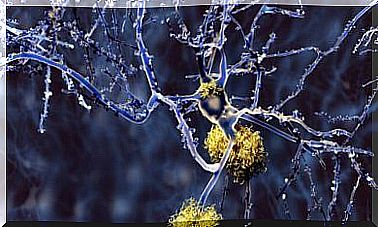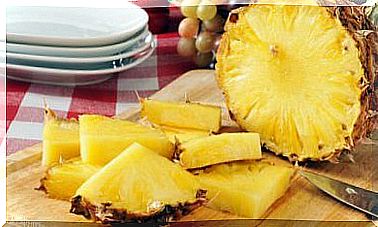Nutritional Values and Benefits Of Including Hearts Of Palm In Your Diet
Did you know that hearts of palm can benefit your health? Indeed, by consuming them, you bring many nutrients to your body. We tell you more about them in this article and we give you some tips to prepare them.
Palm hearts are obtained from different varieties of common palm trees from South America. From this region, they travel to your plate to enrich your meal. It has even become an ingredient of choice in French cuisine.
After a long harvest, the bark and the fibrous layers that surround the heart of the palm are removed. Its texture and flavor is so sweet that it is present in many culinary preparations.
According to Agronomía Mesoamericana magazine , its consumption is on the rise. It is generally sold in the form of preserves. The Bolivian Institute of Foreign Trade notes that at the global level, France is the main importer, followed by the United States and Argentina.
Nutritional values of hearts of palm
Let’s review the main nutritional values of this plant in terms of macro and micronutrients. When canned, it also contains water, salt, and citric acid.
Macronutrients
Due to their low fat and high water content, palm hearts are low in calories. In addition, fiber is one of the non-digestible carbohydrates. This therefore makes them perfect for diets aimed at losing weight.
For 100 grams of tender palm hearts, we find the following macronutrients:
- Calories : 36.
- Proteins : 4%.
- Fat : 0.06%.
- Total carbohydrates : 3.6%.
- Fiber : 3.57%.
- Humidity : 91%.
The minerals
In terms of minerals, palm hearts contain the following elements, expressed as a percentage of the recommended daily allowance (RDI):
- Copper : 70% of the RDI.
- Potassium : 38% of the RDI.
- Zinc : 36% of the RDI.
- Phosphorus : 20% of the RDI.
- Sodium : 357 milligrams per 100 grams of palm hearts.
The most important mineral is therefore copper, which reaches 70% of what you should eat daily. Potassium and zinc are present in good proportions, with more than 30% of the recommended daily allowance. The high sodium content is due to the salt used for preservation.
According to the International Institute of Plant Nutrition, the vitamin content of palm hearts is influenced by the amount of heat they receive during conditioning.
The benefits of palm hearts in the diet
The nutritional profile of palm hearts makes it a suitable food for the prevention of certain diseases. Let’s take a look at its benefits.
Great for weight loss
Some experts link total calorie intake to weight control. The low amount of fat and energy contained in palm hearts makes them a perfect food for low calorie diets. Indeed, one serving provides only 36 calories. That’s why it’s a great substitute for high-calorie foods, such as grains and tubers.
On the other hand, it is proven that dietary fiber and water contained in food have a positive effect on satiety and low energy intake. Thus, almost 100% of the carbohydrates present in palm hearts are fiber. 90% of its mass is water. That is to say, it is a food that is a source of satiety and volume.
A source of essential nutrients
Palm hearts contain minerals that are important for the functioning of the body. These are copper, potassium, zinc and phosphorus.
For example, the United States National Library of Medicine reports that copper helps in the absorption of iron and the formation of red blood cells. In addition, blood vessels, bones, nerves and the immune system are maintained healthy with copper.
Some studies also point out that copper deficiency can lead to ischemic heart disease.
Scientific study points out that zinc is linked to cell division, wound healing and immune function. Zinc deficiency can also affect growth and development during pregnancy and childhood. It also increases the risk of infections (diarrhea and pneumonia).
The journal Advances in Nutrition reports on the importance of phosphorus for the body. It promotes the strength of teeth and bones. It also participates in the production of proteins which repair tissues.
Finally, the magazine Hypertension associates potassium with the prevention and treatment of high blood pressure. Note that palm hearts have a high potassium content.
Great antioxidant capacity
Brazilian pharmaceutical experts have found a large amount of polyphenols in palm hearts. Polyphenols have strong antioxidant activity. It is well known that antioxidants neutralize free radicals which produce oxidative damage at the cellular level.
Heim and other researchers point out that the antioxidant capacity of polyphenols can be used as a therapeutic and preventive nutritional strategy for aging and certain diseases. The journal Food, Nutrition and Health recalls the positive effect of polyphenols on cardiovascular disorders, neurodegenerative disorders and diabetes.
How to consume hearts of palm?
You can find hearts of palm in their traditional form, canned or fresh. It is common to prepare them in salads, ceviche accompanying seafood in vinaigrette, sauce, grilled, seasoned as an aperitif or you can even eat them directly in their packaging.
In vegan and vegan diets, it is used as a substitute for meat, fish or seafood. But beware, it only resembles meat in texture because it does not contain protein. It can accompany fish fingers, vegan carnitas, calamari and taco toppings.
Here are 3 simple recipes:
- Heart of palm dip. Finely chop the hearts of palm and add garlic and a zest of lemon. Mix everything with olive oil and add pepper to taste.
- Hearts of palm with avocado. For this delicious salad, simply combine a medium sized chopped heart of palm with avocado and top it with a mayonnaise sauce.
- Vegan crab with a heart of palm tree. Shred the heart of palm until it looks like fresh crab meat. Season with vegan mayonnaise and Dijon mustard. It’s that simple and delicious.
The versatility of hearts of palm
Hearts of palm are a simple tasting vegetable loaded with health-promoting minerals and antioxidants. In addition, they are ideal for weight loss because their caloric intake is low and their fiber value is high, which produces satiety.
They are very versatile in the kitchen. Thanks to their texture, you can use them as substitutes for fish and seafood.









